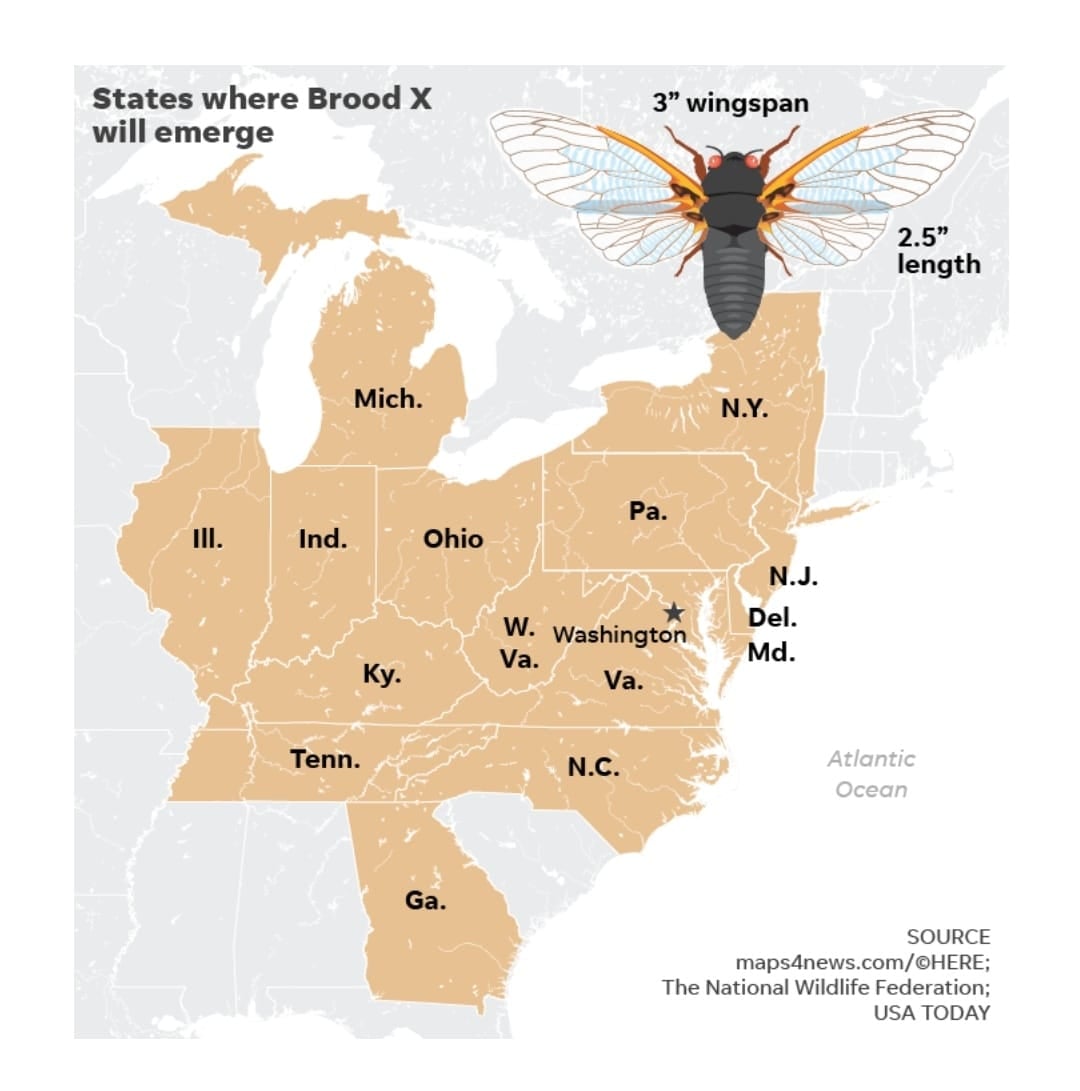PEG HANLEY
Public Information Manager
After spending 17 years underground, billions of Brood X, or the Great Eastern Brood, cicada will boldly and loudly bust out across several states. Ohio is one of 15 states in which the invasion will take place sometime in late April or early May when the soil temperature for cicadas is about 64 degrees Fahrenheit. If you live in Franklin County, the ear-splitting shriek of these shrimp-sized insects might even drown out your family’s backyard barbeque. The chirping and clicking noises of male cicadas are actually a species-specific mating call that females can hear a mile away.
Brood X cicadas have black bodies, orange wing veins, red eyes and six legs. They also have antennae and are typically one to two inches in length. Imagine these creatures lurking in the dirt and feeding on sap root since 2004 and emerging only to molt, become adults, mate and lay eggs and then die within a month or less! After mating, the female finds a tree, makes a slit in the bark of a branch and releases up to 600 fertilized eggs which hatch in about six weeks. These wingless larvae or nymphs drop to the ground and burrow 18 to 24 inches into the soil, where they attach themselves to the tree’s roots and patiently wait 17 years.
In 2004, the Memorial Tournament in Dublin was infiltrated by these winged insects and their droning could be heard in the background of ESPN’s broadcast. When one flew under Kenny Perry’s arm he flinched and hit the ball way left.
The Cicada Mania website https://www.cicadamania.com/ is filled with fun facts and information about these amazing insets. You can also find them on https://www.facebook.com/cicadamania/?ref=mf and https://www.instagram.com/cicadamania/

Where can they now be seen?
They’ve been spotted at Battelle Darby Creek, Glacier Ridge, Highbanks and Slate Run so far.